Search Images
Browse Content (p. 1573)
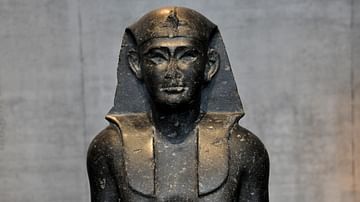
Image
Egyptianized Statue of Augustus
Granodiorite statue which depicts the upper part of a body of an Egyptianized king. The man is probably Roman emperor Augustus. From modern-day Egypt. Roman period, 1st century CE. (State Museum of Egyptian Art, Munich, Germany).
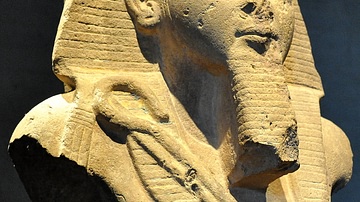
Image
Nubian Statue of Ramesses II
Sandstone statue of the upper half of the seated figure of the Egyptian pharaoh Ramesses II. The lower half is lost. The king holds a crook and a flail. From Nubia, modern-day lower Egyptian and upper Sudanese areas. New Kingdom, 19th Dynasty...
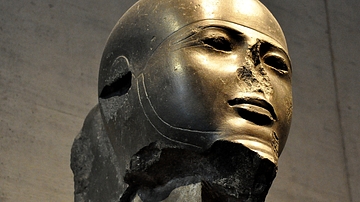
Image
Head of Ptah
Greywacke head from a colossal figure of the Egyptian god Ptah. New Kingdom of Egypt, 18th Dynasty, 1370 BCE.
State Museum of Egyptian Art, Munich, Germany.
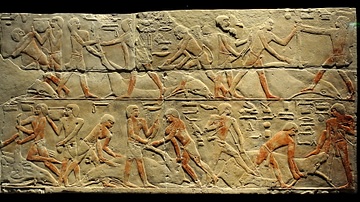
Image
Cattle Butchering Scene from Saqqara
Limestone relief depicting men slaughtering cows. From the tomb of Nianchnesut, Saqqara (Sakkara), modern-day Egypt. Old Kingdom, 5th-6th Dynasties, circa 2300 BCE. (State Museum of Egyptian Art, Munich, Germany).

Image
Tomb Niche & Stela of Chnumit
Limestone tomb niche with a false-door stela and 2 side walls. From the tomb of princess Chnumit (also written Khnumet), Saqqara (Sakkara), modern-day Egypt. Old Kingdom, 6th Dynasty, circa 2200 BCE. (State Museum of Egyptian Art, Munich...
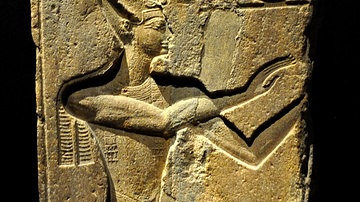
Image
Ramesses II Relief
This sandstone temple wall relief depicts the Egyptian pharaoh Ramesses II praying. From Memphis, New Kingdom of Egypt, 19th Dynasty, c. 1250 BCE.
State Museum of Egyptian Art, Munich, Germany.
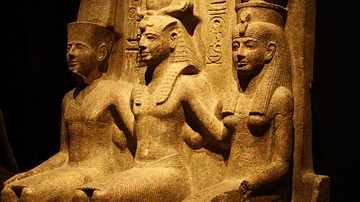
Image
Amun, Ramesses II, & Mut
A granite monument depicting the god Amun, Ramesses II, and the goddess Mut. Dynasty XIX, 1279-1213 BCE. Temple of Amun, Thebes. (Egyptian Museum, Turin, Italy)
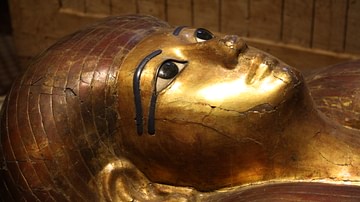
Image
Sarcophagus of Kha (Detail)
A detail of the gilded sarcophagus of Kha, New Kingdom, Dynasty XVIII (1428-1351 BCE). Egyptian Museum, Turin, Italy

Image
Ancient Greek Boustrophedon Inscription
Example of an Ancient Greek boustrophedon inscription. The arrows indicate the direction of the writing for each line. Non-symmetrical letters change their orientation with the alternate directions of the lines.

Image
The Slopes of Machu Picchu
The Inca site of Machu Picchu built by Pachacuti Inca Yupanqui (1438-71 CE). Fortress, sanctuary, and once home to around 1,000 residents, the site is perched in the high Andes above the river Urubamba.